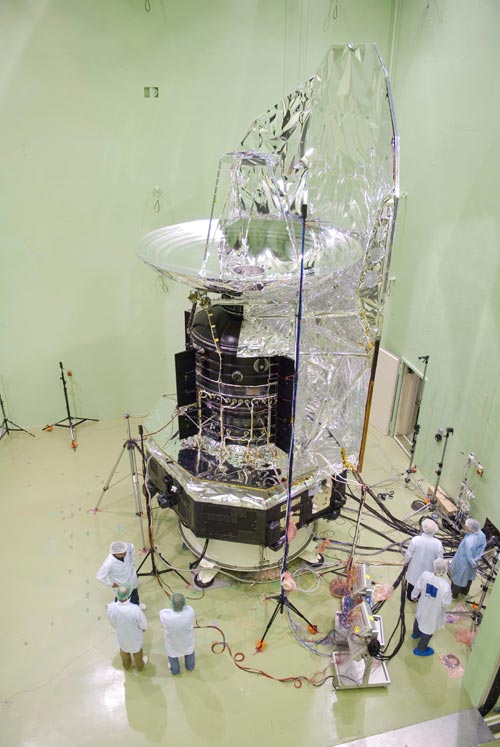RAL Space Involvement
Spectral and Photometric Imaging Receiver (SPIRE) development lead. Ground system lead in science operations, calibration, user support, data processing and analysis software.
Subject
Astronomy
Main Objectives
To study the formation of galaxies in the early Universe and their subsequent evolution, investigate the creation of stars and their interaction with the interstellar medium, observe the chemical composition of the atmospheres and surfaces of comets, planets and satellites in our Solar System and to examine the molecular chemistry of the Universe.
Launch date
14th May 2009
Partners
ESA, Cardiff University, Imperial College, University of Lethbridge, CEA, IPAC-Caltech, University of Sussex, University of Trieste, University of Padova, LAM, NAOC, IAC, IFSI

Image: The Herschel spacecraft undergoes final preparations inside the Large European Acoustic Facility.
Further Project Information
Further project information is available on the following websites:
For more information please contact: RAL Space Enquiries
